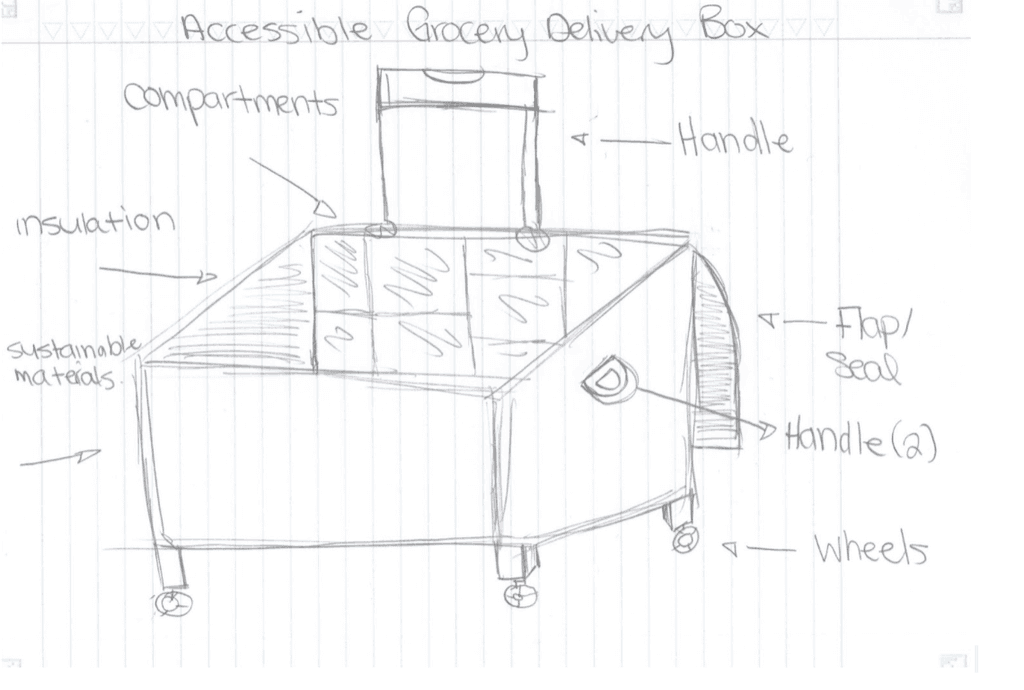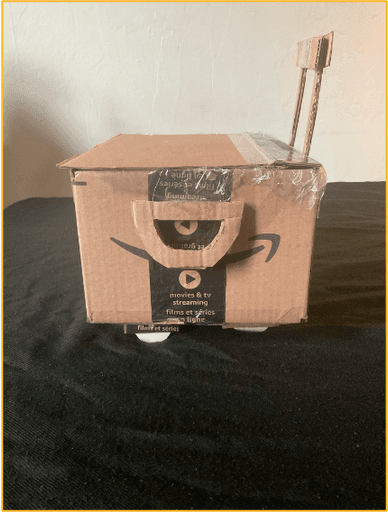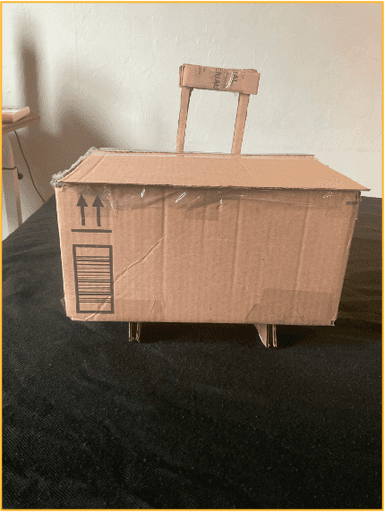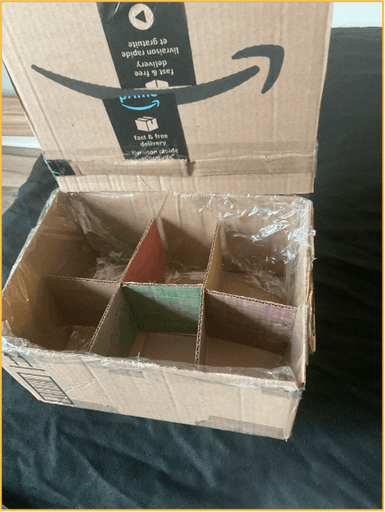The project faced several challenges that required critical thinking and adaptability. Balancing accessibility and sustainability was a significant hurdle, as we needed to find lightweight, eco-friendly materials that were also durable and waterproof. While recycled cardboard was ideal for the prototype, identifying materials suitable for the final product demanded additional research. Designing for diverse user needs, such as individuals with mobility issues, seniors, and families, added complexity, requiring iterative refinements to include features like wheels, handles, and color-coded compartments. Prototyping within the constraints of available materials limited our ability to fully replicate the intended durability and functionality. Ensuring the usability of the compartments, particularly to prevent cross-contamination between items like raw meat and fresh produce, required careful planning. Additionally, coordinating efforts among team members with varying schedules and skill sets highlighted the importance of clear communication and collaboration. Despite these challenges, the experience reinforced the value of user-centered design and innovation, resulting in a solution that balances inclusivity, practicality, and sustainability.
Discover
The project aimed to address common shopping challenges with a focus on accessibility and sustainability. Through research, we identified the primary users as individuals with mobility issues, seniors, and those preferring reusable solutions. This informed our goal of creating a user-friendly shopping box to enhance the overall shopping experience.
Define
Key features were identified to address user needs, including wheels and sturdy handles for easy transportation, lightweight and eco-friendly materials, and compartments for organization. The des.ign also incorporated a waterproof lining to prevent spills and increase durability. These elements aimed to provide a solution that is practical, durable, and inclusive.
Develop
Using accessible and sustainable materials like recycled cardboard for the prototype, we implemented features such as color-coded compartments to separate items (e.g., raw meat, fragile goods) and a zipper seal for added protection. The team iteratively refined the design, ensuring it was easy to handle, transport, and maintain.
Deliver
The final design offered a thoughtful solution for grocery shopping, catering to diverse users, including families and environmentally conscious shoppers. It enhances convenience and safety, whether used for personal shopping or delivery services, addressing both functional and environmental concerns. The prototype demonstrated how this design could simplify grocery transportation while promoting sustainability and inclusivity

The Design Process
The Challenges
Final Product
This project was developed during my second-year course, Maker Lab I, in collaboration with three group members. As a product designer, I worked closely with my team to create innovative features that set our grocery delivery box apart from traditional grocery delivery bags. Our primary goal was to redesign conventional grocery bags with a focus on addressing the mobility challenges faced by individuals.
2 weeks | Product designer
Accessible Grocery Delivery Box




Let's get in touch!
Harpuneet Bhatia © 2024